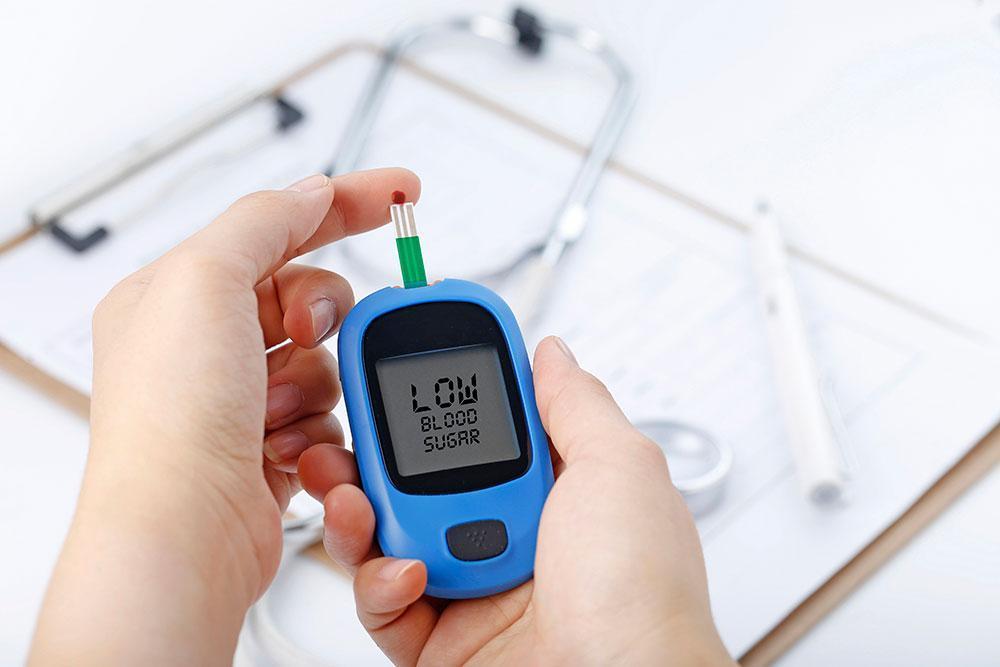Last updated on September 28th, 2022
India is quickly turning into a hub of diabetes patients around the world, and with the increasing number of patients, the government authorities, doctors, and global and national health institutions keep trying to educate us more and more about the disease to help us manage it better. Read this blog to know about new diabetes recommendations for the management of diabetes.
Well, whatever we have learnt so far seems to be going down the drain due to a new report which is challenging the entire dogma built around the management of the incurable diseases that are type 1 and type 2 diabetes.
The new study suggests that diabetes patients should have easier targets for blood protein, which helps in monitoring our blood sugar levels. It even advises some patients to “de-intensify” their medication and stop taking them altogether.

What Do the New Diabetes Guidelines of ACP Suggest?
The American College of Physicians (ACP) has issued some diabetes recommendations for patients across the world. These new diabetes recommendations are mainly focused on a protein known as haemoglobin HbA1c or “A1C”, which has been the biggest measurement for diabetes patients to ascertain their average blood sugar levels.
It is worth mentioning that sugar or glucose binds to haemoglobin while travelling through to the bloodstream of a patient.
Also Read: 6 Surprising Benefits of Sabja Seeds

How Do the New Diabetes Recommendations of ACP Look at HbA1C Now?
For so many years, the American Diabetes Association (ADA) has been suggesting diabetes patients to target to keep haemoglobin HbA1C levels lower than 7 percent. The American Association of Clinical Endocrinologists (AACE), on the other hand, has suggested a more stringent target of lower than 6.5 percent.
Well, the latest report from the ACP has completely nullified the diabetes recommendations of the previous organizations, by suggesting that more patients suffering from type 2 diabetes should target to achieve a much higher HbA1c level, ranging between seven and eight percent.
Your HbA1c measures how much Advanced Glycation End (AGEs) products have got stuffed in your bloodstream during the past three months. Subsequently, this measurement is analysed to find out the patient’s average blood glucose level during the past three months. This is known as the estimated average glucose (eAG) of the patient.
Summary
The latest report from the ACP has completely nullified the recommendations of the previous organisations, by suggesting that more patients suffering from type 2 diabetes should target to achieve a much higher HbA1c level, ranging between seven and eight percent.
How are New Diabetes Recommendations Different From the Older Ones?
The new ACP recommendations clearly contradict decades old beliefs and diabetes guidelines that suggested that if a patient has an HbA1c level of over 7 percent, he/she is at an elevated risk of suffering from severe diabetes complications, like diabetic retinopathy and neuropathy.
People who have not been diagnosed with diabetes have their HbA1c level below 5.7 percent, while the healthiest people measure even below 5 percent, which means that their blood sugar would very rarely have gone lower or higher than the 70 to 130 mg/dl range.
The doctors, for diagnosis purposes, suggest that a person whose HbA1c levels is higher than 5.7 percent, he/she is suffering from prediabetes, and if the HbA1c level is above 6.5 percent, it means that the person is diabetic.
Interestingly, ACP believes that people intentionally allow their blood sugar levels to stay high constantly to measure an HbA1c level between 7 and 8 percent, which clearly translates into blood sugar levels being between 150 and 200 mg/dl, which is way above the healthy limits.
Well, ACP is suggesting to aim for higher blood sugar targets because the studies have shown inconsistency in people showing complications when their HbA1c was in this higher range. The complications only appeared among the patients who had an excess amount of protein in their urine, meaning a pre-existing kidney disease.
Hence, ACP has shifted its focus from the fear of complications due to higher HbA1c levels to the particular needs of every patient individually.
Summary
The new ACP recommendation contradicts the old guidelines on so many levels. The earlier ones suggest that if a patient has an HbA1c level of over 7 percent, he/she is at an elevated risk of suffering from severe diabetes complications, like diabetic retinopathy and diabetic neuropathy. Interestingly, ACP believes that people intentionally allow their blood sugar levels to stay high constantly to measure an HbA1c level between 7 and 8 percent, which clearly translates into blood sugar levels being between 150 and 200 mg/dl, which is way above the healthy limits.
Also Read: How to Lower Blood Glucose Levels?
How Should Doctors Approach Diabetes Treatment?
The ACP has suggested the doctors to set personalized goals for every patient for blood glucose control based on the following parameters –
- Benefits of drug therapy
- Harms of drug therapy
- Preferences of every patient
- Overall health of the patient
- Life expectancy of the patient
- Burden of treatment on the patient
- Cost of the care and treatment of the patient
Moreover, the ACP has also recommended that the doctors should also ensure that the patients who have successfully achieved their HbA1c targets, which is reaching below 6.5 percent, should get a “de-intensified” diabetes management plan, either by reducing their dosage of medication or knocking one of the medicines off completely.
Summary
The new ACP recommendations suggest a personalized treatment method for every individual diabetes patient. This should be done after a thorough discussion on pros and cons of drug therapy, patient’s preferences, life expectancy, cost of treatment and care and overall health of the patient. Moreover, the drug therapy should be “de-intensified” if a patient has achieved his/her goal of HbA1c level below 6.5 percent.
The Possibility of Backlash on New Diabetes Recommendations
Well, people who actually have achieved an HbA1c level below the range of 6.5 percent might not take the new recommendations by the ACP very warmly, as they must have worked really hard to get a level of sugar in their bloodstream which is traditionally considered healthy.
Even the experts who have been preaching to follow a strict diet, do regular exercise and adhere to the schedule of medications may not take it well enough as they have been treating their patients with the current guidelines for a long time. Moreover, the new recommendations may not be as assuring to them as there is a possibility of this method causing harm to the patient. Hence, it would require a lot more research to make this risk worth taking.
Additionally, the experts also suggest that many people with type 2 diabetes may have to adhere to the previous recommendations of tightly controlling their lifestyle. People who are at a lower risk of suffering from hypoglycaemia but at a higher risk of having vascular complications may benefit from keeping their HbA1c levels below seven percent.
The experts have also suggested that glucose control not only helps in avoiding the long term health complications, but also greatly impacts day to day functioning of every diabetes patient. Furthermore, having higher levels of glucose in the bloodstream also affects a person’s ability to carry out physical activities, intellectual capability and emotional standpoint.
Summary
The new recommendations by ACP have sparked a controversy in the medical fraternity as it recommends the patients to intentionally have higher blood sugar levels, which potentially can cause a lot of complications. Moreover, having high blood sugar levels also impairs your physical, intellectual and emotional capabilities. Hence, there might be a need for a lot of more research to establish this type of approach for diabetes management.
The Only Non-controversial Recommendation
There, however, is one aspect of the ACP’s recommendations that may not draw flak from the medical fraternity is the emphasis that patients who have a life expectancy of less than 10 years or who are above the age of 80 years, or the people who already have a chronic health condition apart from diabetes, should be more focused on keeping away high blood sugar symptoms and less focus on their HbA1c levels.
Also Read: Is corn good for diabetics?
The Only Exception to their Loose Guidelines?
The ACP has also suggested that people who are trying to manage their type 2 diabetes only using dietary changes and routined physical activities should aim for an HbA1c level below seven percent. This, as per the experts, is the only positive thing that the new diabetes recommendation has suggested.
Also Read: Is Rice Good for Diabetics?
Takeaway
The new diabetes recommendations by ACP do make a point of personalised treatment methods for every diabetes patient, but it can be very dangerous on so many levels. It is true that people with blood sugar do not always show diabetes complications, which is a kind of inconsistency, but putting a patient at the risk of suffering from these complications is a bit of a stretch. Hence, experts are still recommending the diabetes patients to stick to the previous methods of managing the disease.
Also Read: Blood glucose levels mmol/l
FAQs:
What is the new blood sugar level for diabetes?
ACP believes that people intentionally allow their blood sugar levels to stay high constantly to measure an HbA1c level between 7 and 8 percent, which clearly translates into blood sugar levels being between 150 and 200 mg/dl. Read to know more normal blood sugar levels in adults.
What is the new standard for A1C?
The latest report from the ACP has suggested that more patients suffering from type 2 diabetes should target to achieve HbA1c level, ranging between 7 and 8 percent. It earlier used to be less than 7 percent. People between 5.7 to 6.5 percent used to be considered in the prediabetes stage, while people with 6.5 percent or higher were considered diabetic.
What are the new guidelines for diabetes?
The latest report from the ACP has completely nullified the recommendations of the previous organisations, by suggesting that more patients suffering from type 2 diabetes should target to achieve a much higher HbA1c level, ranging between seven and eight percent.
References:
- https://www.healthline.com/health-news/new-diabetes-recommendations-challenge-old-guidelines
- https://diatribe.org/2021-updates-ada-standards-care
- https://www.healio.com/news/primary-care/20200122/new-diabetes-guideline-reflects-change-in-glucose-therapy-considerations
Last Updated on by Dr. Damanjit Duggal
Disclaimer
This site provides educational content; however, it is not a substitute for professional medical guidance. Readers should consult their healthcare professional for personalised guidance. We work hard to provide accurate and helpful information. Your well-being is important to us, and we value your feedback. To learn more, visit our editorial policy page for details on our content guidelines and the content creation process.

 English
English












